A very Christmas sweet from Eastern Spain
Wednesday, December 27, 2017
Today I want to talk to you about a typical Christmas sweet in Valencia: Sweet potato and peanut small cakes of wafer.
There is a video, which explains you the recipe very well; if you want to watch this video, please click below:
http://www.rtve.es/alacarta/videos/aqui-la-tierra/aqui-tierra-pastelitos-obleas-boniato-cacahuete-para-navidad/4383726/
Some ladies from Alginet (Valencia) have taught Koldo (reporter of the program "Aquí la tierra") to make such a Christmas sweet.
Koldo: “Girls: I am already here ... Hey, Mer, what's up? ...”
Mer: “It was time….”
Koldo: “Listen to one thing: Can I come into your house?. They have told me that you are nice but that you tick people off here .....”.
Mer Torres (Homemakers Tyrius): “I tick people off, I tick people off”
Koldo: “You tick people off, Right?”
Koldo: ”I have brought you the sweet potatoes ... Come I on time or not?”
Mer: “Now for what, now for that, if it is already made?”
Koldo: “Have you already done everything? ..... What are what we are preparing?”
Maria Teresa Burchés (Homemakers Tyrius): “Cakes of wafers with sweet potato and peanut, from Alginete”
Koldo: “And peanut”
Mer: “The ladies from Alginete are great character and they know how to do everything ..., of everything what you want”
Koldo: “Well, I have come with the sweet potatoes, because you have called me .....”
Mer: “But you have arrived late”
….music……
Mer: “Many more things can be done; but, as always you are in a hurry, we have done only this”
Koldo: “Tell my boss….”
Mer: “And we still have something else, in Alginete: you have sweet potato, you give me sweet potato; I have caki, I give you caki. Everyone gives what they have and we are very very unified”.
Koldo: “Then it is a barter, right?”
Mer: “Exact”
Koldo: “But look, pay attention, I have brought this one ..., take it, give me twenty Euros ....”
Mer: “No, no way”
Maria Teresa Burchés: “The peanut is roasted, the dark skin is peeled and the peanut is passed through a mortar”
…..music……….
Mer: “Once I left a finger picking peanuts”
Koldo: “Is it difficult ... Have you take it with a knife?”
Mer: “No, no, no…., you peeled, on a stone, and, then, I did so and I almost left a finger”
Maria Teresa Burchés: “We have boiled the sweet potato, we have peeled it and gone through the masher. You give the point to sugar and water and then put: the sweet potato, already crushed; the peanut, which is also crushed, cinnamon, lemon and sugar”
Koldo: “What flavor does it have?”
Maria Teresa: “Special, it is special; it is a special snack ....; it is sweet but it is not oversweet”
Koldo: “With whom do we accompany this?. Here are the friends of the Association. When was it eaten and how was it eaten”
Maria Teresa: “They are those of the Board .....”
Koldo: “Are you those from the Board ...?, Do you lend twenty Euros to me...?”
They laugh……
…..music……..
Koldo: “How was it eaten….?”
Maria Teresa: “How was it eaten….?, well, after the meal .....”
Koldo: “Yes, lady”
Maria Teresa: “.......with coffee, with champagne, with Bistela (a stuffed corn bread with prawns and cheese for example) ...., as you want .....”
Koldo: “Do you remember the first time that you tasted these small cakes?”
Mer: “Yes, when I conquered my husband ...; I conquered him by the mouth ....”
Koldo: “Ahhhh. By your way of speaking?”
Mer: “No, no, by my way of cooking…”
Koldo: “Ah. By your way of cooking”
Mer: “He came invited, with some friends, a day; I set the table, he was awestruck... and he stayed”
…………….music………………
Koldo: “We have the sweet potato with the peanut, we have the neula (a crunchy and sweet dessert from Catalonia, typical at Christmas), ...... What do I make?”
Mer: “Bread it”
Koldo: “I put it”
Mer: “Fold it”
Koldo: “I fold it….,I have broken it”
Mer: “Break it”
Koldo: “So?”
Mer: “So….And eat it”
Koldo: “And this is it, right?”
Mer: “This is it”
They laugh…………
Koldo: “It is so….I make this and it is so…..and this is it…..So good…..I am going to stay sixty-nine years more here ...!”
Mer: “I have enough with one”
Koldo: “Ehhhh?!”
Mer: “I have enough with one”
Koldo: “Do you know what I am saying to you?, that as you do not want it, I steal it ..., keep working ..., see you, girls ...”
They tell Koldo goodbye……..
Well, I hope that you will like the video, with that original and homely dessert.
Until my next post, kind regards,
Luis.
Sponsored by Costaluz Lawyers.
Please click below:

 0
Like
Published at 3:07 PM Comments (0)
0
Like
Published at 3:07 PM Comments (0)
A Spanish recipe for Christmas
Friday, December 22, 2017
Today I want to share with you a very simple recipe, for the dinner of the next day 24 (Christmas Eve): "Bream baked".
This is one of the most traditional fish dishes in Spain. It is a little expensive dish, if you buy the sea bream; but if you buy it from a fish farm, you will pay less.
These are the Ingredients: 1 sea bream from 1.3 to 1.6 Kilograms. 3 potatoes. 3 tomatoes. 2 garlic. 2 bay leaves. Extra Virgin Olive Oil. A few drops of vinegar. 10 millilitres of white wine. Salt. 1 lemon.
This is what you have to do, to make this delicious dish: Wash the potatoes and put them in a casserole with water, add the bay leaves, season and put them (the potatoes) to cook over low heat, for 15 minutes. Open the sea bream, by the central spina, leaving it whole, season the inside and spread with oil and season the outside. Place the sea bream on the potato slices and put the tomatoes around the fish, in a platter. Introduce the platter, in the oven, preheated to 170º, during 20-25 minutes, turning it over at 10 minutes. Check that the sea bream is made and remove it from the oven.
And this must be the result:
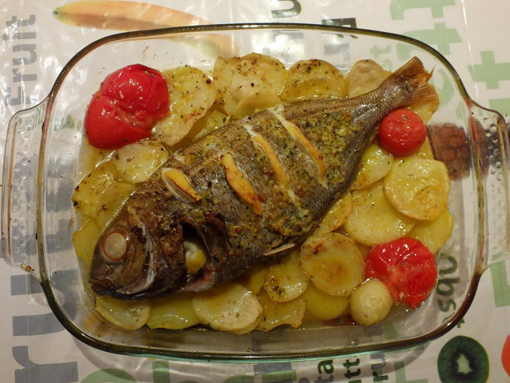
I hope that you will like this recipe and hope that you want to try to cook it, this year.
Until my next post, kind regards an Merry Christmas!.
Sponsored by Costaluz Lawyers.
Please click below:

 0
Like
Published at 12:32 PM Comments (0)
0
Like
Published at 12:32 PM Comments (0)
Spain records almost 5 cases of Multiple Sclerosis each day
Thursday, December 21, 2017
Today I want to tell you an important piece of news: "Spain has 1800 new cases of Multiple Sclerosis every year but many patients can lead a normal life”.


The Multiple sclerosis is a neurological disease, that affects 47,000 people, in Spain, and annually, according to data from the Spanish Society of Neurology (SEN), 1,800 new cases are detected, at an average of 4.9 per day, of which 70 % are people between 20 and 40 years old.
According to this scientific society, on the occasion of the National Multiple Sclerosis Day, that was celebrated the last Monday, December 18, the number of patients has doubled, in the last two decades, both due to an improvement in the knowledge of the disease and in the diagnostic techniques, as for environmental and lifestyle factors, that seem to favor its appearance, such as smoking, vitamin D deficiency, exposure to sunlight and diet change.

"We still can not determine what causes this disease, but it is clear that the latest research points to a concurrence of both genetic and environmental factors (among others) by which the defensive system of the body of certain people ends up producing the disease ", emphasised Ester Moral, coordinator of the Study Group of Demyelinating Diseases of the SEN.

Ester Moral
However, the fact that it is associated with factors dependent on lifestyle makes the patient able, among other things, to influence with its habits in its prognosis, for example by quitting smoking, carrying out a low salt diet.
On the other hand, despite this increase in greater knowledge of the disease, its diagnosis can be complex given its heterogeneity. Not only of symptoms and evolution, but also of prognosis or response to treatments.
"Its correct diagnosis requires the realization of a good clinical history, a detailed physical examination and the use of complementary explorations, mainly magnetic resonance, which allows a relatively early diagnosis, in a large number of cases", explained this expert.
In fact, the average delay in the diagnosis and treatment of multiple sclerosis is between one and two years, something in which we must continue to improve, since the early and adequate use of available therapeutic resources is an essential factor to improve the prognosis of patients.
The average age of onset of symptoms is around 28 years and the ratio of affected women / men is approximately three to one. Any symptom attributable to a lesion of the central nervous system can be a symptom of multiple sclerosis, although some symptoms and syndromes are more frequent.
Thus, sensory and visual symptoms, such as tingling or numbness of one or more limbs, or loss of visual acuity, are the most frequent symptoms of this disease, especially in its initial phase, as they are present in the 50-53 % of the cases.
However, when the disease is advanc ed or progressive, motor symptoms tend to be more common, which are mainly manifested as weakness, especially in the legs and / or muscular stiffness, in 40-45% of cases.
In spite of everything, Moral has recognized that thanks to the appearance of new drugs, able to modify the course of the disease, together with the use of other therapeutic measures not only pharmacological (also rehabilitating or surgical), its prognosis has undergone a "radical change" and that "many patients can lead a normal life with the disease ".
In fact, there is a large number of patients, who have lived with the disease for more than 15 years and who still do not have a significant disability, says this representative of the SEN.
Well, I hope that the scientists can continue searching some new therapies, to end with the Multiple Sclerosis.
Until my next post, kind regards,
Luis.
Sponsored by Costaluz Lawyers.
Please click below:

 0
Like
Published at 9:35 AM Comments (0)
0
Like
Published at 9:35 AM Comments (0)
Another interesting and abandoned village in the north of Spain
Monday, December 18, 2017
Today I want to talk to you about an abandoned village in northern Spain: Cortiguera.
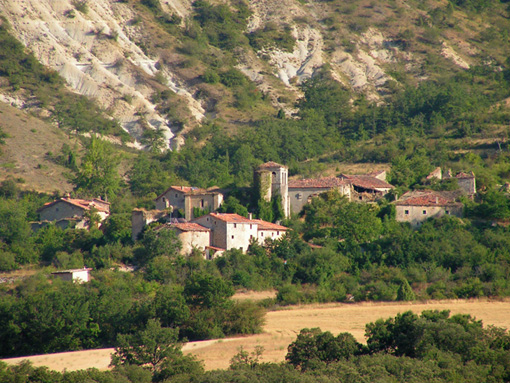
A view of Cortiguera
This beautiful village, in the province of Burgos, with a medieval air, is located on the left bank of the Ebro Canyon. Since antiquity, it has been a village of sturdy ancestry, as attested by its noble manor houses. In the 60's, of the last century, began its decline, as it also happened in many villages, in the region, due to isolation and poor communications suffered, as well as lack of incentives, for young people, and the emerging industry, which then appeared in the Basque Country. The people went to Bilbao, mainly, and some families to Burgos and Santander. Felipe Varona and his brother were the last to leave the village, around 1965.

Palace of the family De la Fuente Bustamante

Palace of the family De la Fuente Bustamante (Built in 1701)

Another Palace in ruin

A noble house in ruin
In the decade of the 90s, a group of young neo-rural people settled in the village, isolating themselves from the world and living, at their free will, for a few years, until they decided to leave. At present, Cortiguera, authentic delight of village, to walk leisurely without haste and delight in the multitude of corners, which appear before our eyes, is winning the battle against abandonment, because the access road has been fixed, they have rehabilitated several houses and a house works like rural tourism (Tálamo); however, the abandonment is still evident and there is still much to be restored and rehabilitated, including important heritage pieces.

Some abandoned houses

Other houses at the entrance of the village

A street with some houses

Another street with abandoned houses

A house with a nice view

The farmhouse Talamo

The sitting room of Talamo
Especially worrisome is the situation of ruin, which presents the Gothic church of San Sebastian, of magnificent design and superb starry vault, with great beauty. Its portico of entrance, unfortunately it came down, which forced to plug, partially, the access door. Inside we can also see wall paintings, already worn, and graves on the ground, looted, as well as a winnowing machine, to separate the grain from the straw, which is out of place. Fortunately, the altarpieces of San Miguel and the Resurrected Christ could be placed safely and, nowadays, they are in the Altarpiece Museum of the church of San Esteban, in Burgos capital.

The church Saint Esteban with Góthic style from the XVII Century

A vault of the church

Inside the church

A big detail inside

A detail of the bell tower
As I said before, some houses of Cortiguera, where we can admire impressive works of stonework, have been happily restored. This is the case of the Palace, with two towers, of the De la Fuente Bustamante family, which after being abandoned for a long time, has been acquired by a private citizen and rehabilitated. But, as I also pointed out before, there is still much to be restored, such as the old school and several mansions from the seventeenth century.

The Bustamante´s Palace

The old School
Well, I hope that you will like this article and hope that you can go to this nice village anytime.
Until my next post, kind regards, Luis.
Sponsored by Costaluz Lawyers.
Please click below:

 2
Like
Published at 10:52 AM Comments (0)
2
Like
Published at 10:52 AM Comments (0)
Another spanish saying and proverb 78
Wednesday, December 13, 2017
Today I would like to share with you a very popular Spanish saying: "Look for a needle in a haystack".

A needle

A haystack

Blocks of hay
That phrase means to engage in something so arduous, if not impossible, as the familiar phrase itself expresses, in a figurative way, even though in fact, needles have occasionally been found, in the most unsuspected places, such as palafitos, pre-Christian Egyptian tombs and even caverns of the Neolithic.
For example, you could say: "What do you want me to say, boy?. To me, that pretension of yours seems to me more like looking for a needle in a haystack".
Well, I hope that you will like to know this saying, in case you did not it.
Until my next post, kind regards,
Luis.
Sponsored by Costaluz Lawyers.
Please click below:

 0
Like
Published at 10:53 PM Comments (2)
0
Like
Published at 10:53 PM Comments (2)
First National Fair for the Repopulation of Spain Empty
Tuesday, December 12, 2017
From 10 to 12 of last November, the First National Fair for the Repopulation of Spain Empty (PRESURA) was held the restaurant “El Hueco”, in Soria.
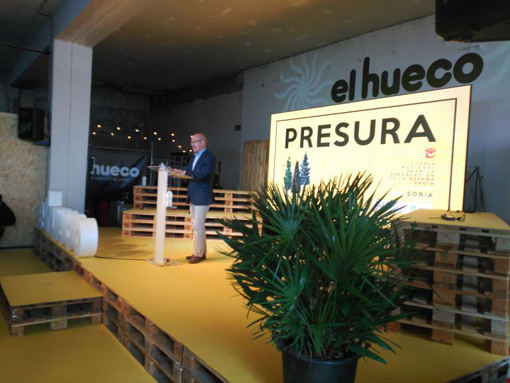
PRESURA
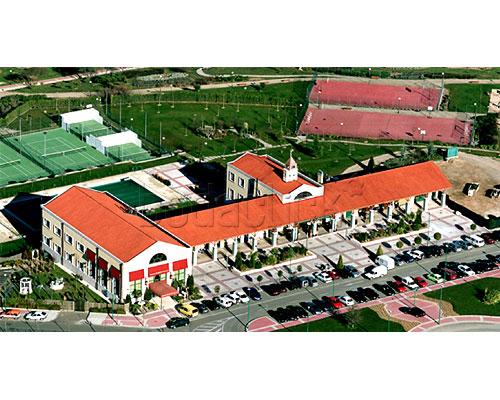
Restaurant El Hueco
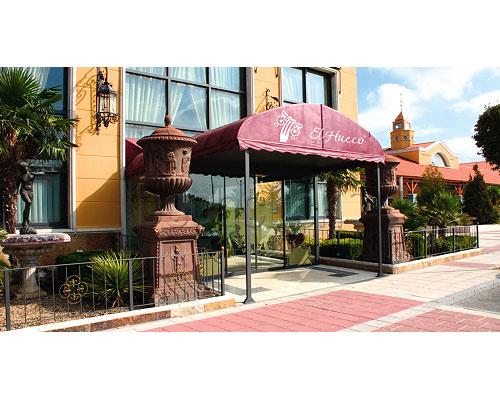
The façade of the restaurant
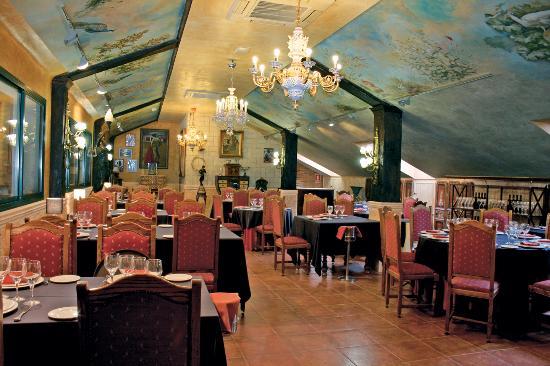
The dining room in El Hueco
This Fair is different from the rest of congresses on depopulation, held until now, because it was born with the aim of putting entrepreneurs, who want to live and develop their projects in rural areas, in touch with those institutions and people, who can help them, to carry their initiative such as town halls, county councils, local action groups, NGOs or investors.
PRESURA started with the participation of more than 70 public and private entities, throughout all Spain.
The inauguration of this Congress was chaired by Edelmira Barreira, National Commissioner for the Demographic Challenge, who has applauded the initiative of El Hueco, because, according to her, "here is showing that in empty Spain, badly named Spain empty, there are many people with many initiatives and creativity, and that these days have a space here to reclaim the territories and put themselves in value, it is possible to live and work in the villages, and there are more and more people with initiative and willingness to want to live in a different way far from the large cities centre".
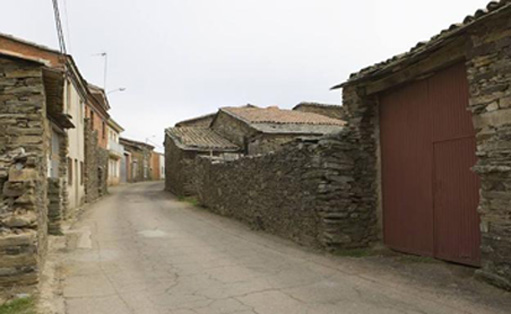
A village without people
José Luis Sora (Regional Minister of the Territory of the Government of Aragon) explained, at the opening of the Fair, that "the measures against depopulation have no immediate effects, that is why I think things are going well". He added that "Aragón share, with Soria and other territories of the country, a situation as worrying as it is similar, demographic and population problems; in Aragon we have been working for 20 months already, in a territorial policy, precisely to combat these challenges, as an instrument to start working. It is a great success that Aragón will host the PRESSURE Fair next year".
In El Hueco, you could find exhibitors, conferences, projects and many activities to facilitate the networking of the attendees.
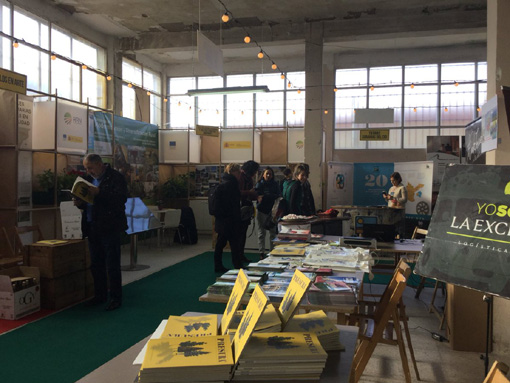
Exhibitors
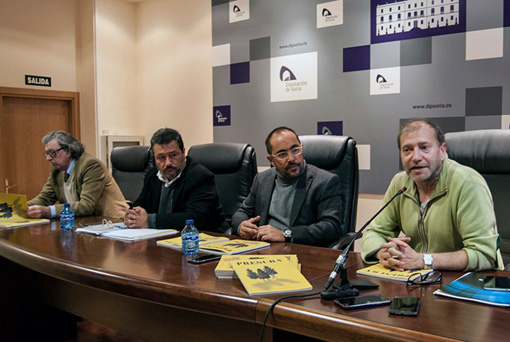
A conference
The most important sectors, which were represented at the Fair, are: Agroecology, Forestry, Rural Housing, Circular Economy, Rural Tourism, Renewable Energy, Technology, Education, Art and Social Entrepreneurship.
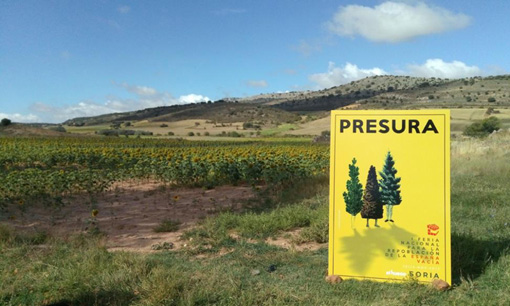
PRESURA in the countryside
But there have also been other parallel activities, such as: musical proposals, slowfood, etc.
Well, I hope that you will like this article.
Until my next post, kind regards,
Luis.
Sponsored by Costaluz Lawyers.
Please click below:

 0
Like
Published at 12:47 AM Comments (0)
0
Like
Published at 12:47 AM Comments (0)
Maragato Stew: a diferent way of eating in the north western Spain
Thursday, December 7, 2017
Today I would like to talk to you about a very curious recipe: "El Cocido Maragato"(“Maragato Stew”); but not curious for its ingredients, but for its way of being served.
This is a traditional stew, in the region of Maragatería, in the province of León, Autonomous Community of Castilla y León, Northwest of Spain.
It is a stew that traditionally fed farm workers, in a single meal for a hard day's work. The “maragato stew” basically consists of the elements of the field: soup, cabbage, chickpeas and seven meats. It is a very popular dish, in Astorga or the villages of its region, such as Castrillo de los Polvazares or Santiago Millas.
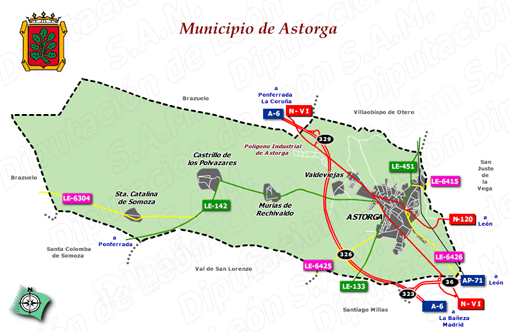
Map of the region of Astorga
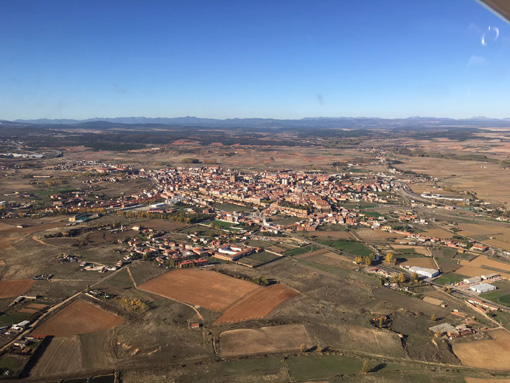
An aerial view of Astorga
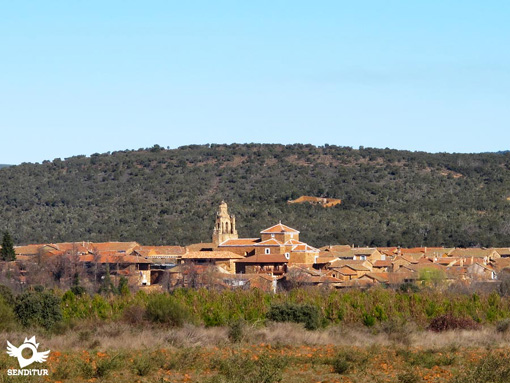
Castrillo de los Polvazares
One of the most outstanding characteristics of this stew is that, in the three overturns, it is served 'upside down', being first the meat of the stew, then the vegetables, to finish with the soup.
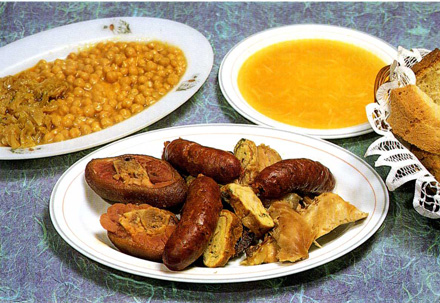
Maragato Stew
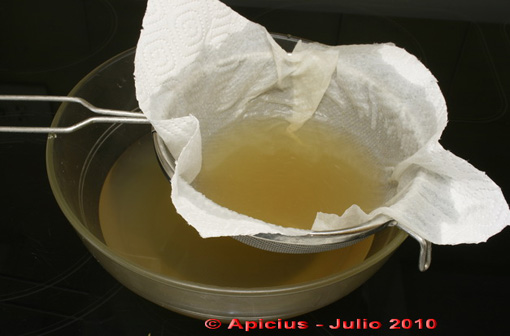
Estameña
The name “ration” comes from rationing, refers to the obligation to distribute friendly, for diners. Nowadays it usually has up to twelve meats of different types and parts. The festive chorizo, the pig's nose and the pig's ear are the most frequent together with shoulder blade,fhank ... The ration is the first that is tasted, it is the distinguishing element of the rest of the stews ones.
For the stew, the best chickpeas are those of “Pico Pardal” (a special type of chickpea from the region of Maragatería) of Valdeviejas, Quintanilla de Somoza, Piedralba de San Cristóbal and Fuentesaúco, these are cooked in a boil.
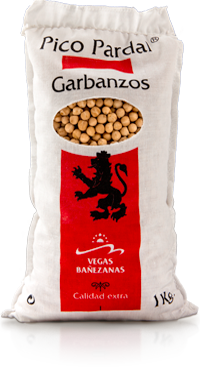
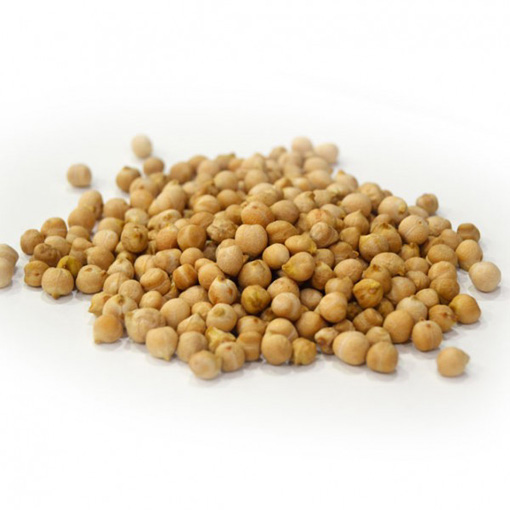
Chickpeas “Pico Pardal”
They are presented on the table in a platter or stringer. They are presented dry and separately. They are eaten after the ration (although this is never removed from the table). Only the host has the privilege of doing the “envuelta” (wrapping) (water the chickpeas with noodles of the soup).
With the chickpeas are added potatoes and cabbage, in separate platters.
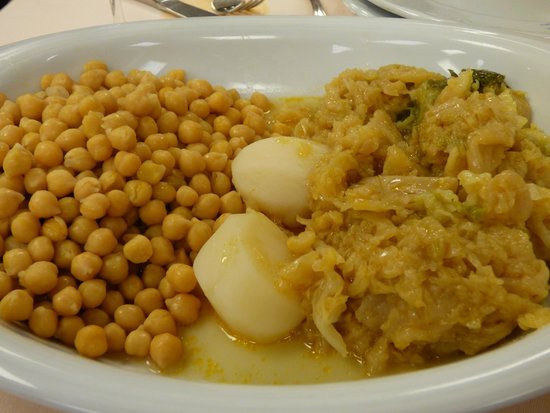
Chickpeas with potatoes and cabbage
The soup usually has noodles or loaf of bread. The broth is to drain the chickpeas and the ration. The soup of maragato stew has to be so thick that it can be cut with the spoon.
It is a dish served hot, the order of putting the contents is 'inverse': in the “maragato stew” you start with the meat and ends up in the soup.
There is much debate about the origin of this tradition. One of the theories says that it was the food of muleteers and, as they had to eat during transportation, the most solid food was served first. Another theory says that it was eaten by peasants, who were served, in the countryside, in a clay pot, and, if they started with the soup, they would arrive to cold cooked meats; therefore, they did the opposite.
The most typical dessert is usually “custard with a sweet bun”, although you can also eat “maragato sponge cake” or other desserts.
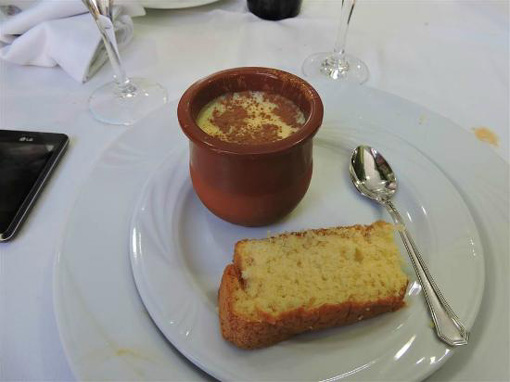
Custard with a sweet bun
Well, I hope that you will like this article and hope that you will go to the Maragateria region, to taste this wonderfull recipe.
Until my next post, kind regards,
Luis.
Sponsored by Costaluz Lawyers.
Please click below:

 0
Like
Published at 10:32 AM Comments (0)
0
Like
Published at 10:32 AM Comments (0)
Spam post or Abuse? Please let us know
|
|